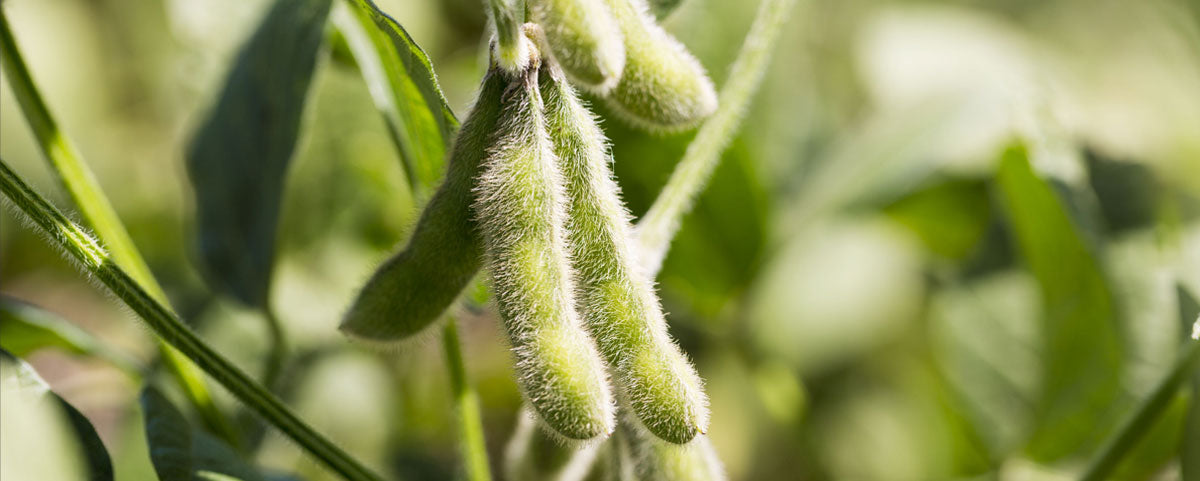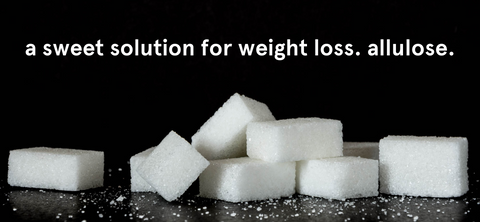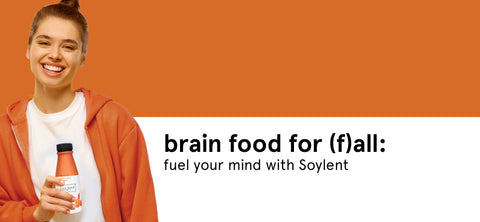
What Is Soy?
OK, before we dive into the specifics of why we chose soybean protein for our meal replacement foods, let’s have a quick moment to refresh on the core topic here: what is soy?
Throughout this article, you’ll hear us reference soy as soy protein isolate.
Soy protein isolate is an isolated protein from the soybean that is engineered to create a higher quality of protein that is similar to any protein found in animal products—but better.
We’ll get into that later.
Why does Soylent only rely on soybean protein?
Soylent is formulated using vegan ingredients for sustainability and nutritional reasons. Our commitment to sustainability is so evident, in fact, that we recently became one of the first companies to receive the U.S. Grown Sustainable Soy certification.
After a few early product iterations made with rice protein, we chose to use soybean protein isolate as the source of protein in our products.

So, what are the benefits of soybeans over other plant proteins?
There are so many benefits of soybean protein over others. But, we chose soy as our main ingredient for all of our meal replacement products because it is a complete source of protein as measured by its PDCAAS.
What is PDCAAS?
This lengthy acronym stands for Protein-Digestibility Corrected Amino Acid Score (PDCAAS). It’s one of WHO’s main tools for judging the well-roundedness of an animal or plant protein.
On a scale of zero to one, PDCAAS measures how complete a given protein is. If a protein scores around 0.1 or close to 0, this protein still has some benefits for your body but can’t totally sustain everything your body needs. If a protein scores 0.9 or higher, it’s nearly a complete protein.
What does soy score on the PDCAAS? A 1.0 — the greatest score possible!
We also love soy because it has long-term health benefits, and, of course, we love the taste, too.
Not only do we value flavor and nutritional value, but we also value the planet we all call home. Because American grown-and-processed soybeans are plentiful, soybean protein has a good sustainability track record. Unfortunately, this can’t be said of many other plant proteins that are often sourced from overseas, at least partially.
Soybean protein that is grown and processed in the US must also adhere to strict quality standards and strict limits on heavy metals and other residues.

As of 2018, soybeans covered the most acreage of any crop in the United States —surpassing corn for the first time. Export tariffs have now impacted these numbers, but soybeans remain a core part of our economy.
The US exports a large number of soybeans overseas but also supports a strong national food ingredient industry. Soybeans are rich in protein but also in unsaturated oil, which is widely used under the name “vegetable oil.”
Soy protein isolate is the ingredient we use in Soylent as our source of protein.
This ingredient is available from other countries, but we chose US grown and processed soy protein isolate because of the sustainability practices that farmers in the US must adhere to.
The US Soy Sustainability Assurance Protocol is a program in the US that a vast majority (approximately 95%) of soybean farmers comply with to demonstrate their commitment to sustainability and continuous improvement.
The protocol covers many aspects of sustainability, such as:
- Fair and safe labor practices
- Biodiversity conservation
- Environmental protection
- Continuous improvement
Soybean agriculture often gets a bad rap for its sustainability footprint and is often associated in the media with deforestation and poor soil health. But, unlike other countries around the world, the US has strict sustainability measures in place. With continued use and reliance on US soy, there can be a positive effect on soy’s global reputation as a sustainable crop.
Does soy cause deforestation?
Soybean production in the US does not translate to deforestation.
The United States is ahead of all other countries in the world in preserving public forestry lands, according to the United Nations Food and Agriculture Organization.
Since the turn of the 20th century, the amount of forest land in the United States has remained relatively stable (see figure below).
Forest land increased by 5 million acres between 1982 and 2015, while farmland usage declined during the same period [3, 4].
In addition, in the US, soybeans cannot be grown on highly biodiverse grassland, peatland, wetlands, and primary forest.

International standards on soybean production are improving, but in many countries, soybean farming practices are still destructive. Global soybean demand is driving significant deforestation in Brazil (including conversion of savannah and other natural vegetation) in parts of the Cerrado region where 37% of the expansion of soybean cropland between 2005 and 2016 was in newly deforested areas.
Does soybean production affect soil health?
Soybeans, like other crops grown at large scales, have been viewed as having a negative impact on soil health.
Soil health is becoming a hot topic even outside the agriculture industry.
More and more, we hear about practices to protect soil health and the impact of soil health on the food we eat. Farmers are front and center in these conversations and are committed to soil conservation. After all, their livelihood depends on healthy soils. Farmers all over the US are now reverting to reduced tilling or no tilling to reduce their impact on the soil [6].
Through soil conservation practices, U.S. farmers have reduced soil erosion by 65% per metric ton of U.S. soybean production since 1980 (US Soy Sustainability Practices). Practices to improve soil health are increasingly being adopted but more work remains to be done to improve the impact of farming and farming yields.
In addition, soybeans are a nitrogen-fixing crop, meaning that with the help of bacteria, they can fix atmospheric nitrogen from the air and can help increase the levels of nitrogen in the soil when planted in rotation with other crops to help enrich the soil.
So, why did we choose soybean protein?
- It’s a high-quality plant protein
- It’s one of the most sustainable proteins available
- Its natural, great taste
Although people are increasingly interested in including more plant-based meals into their diet, taste remains a serious barrier for the less adventurous among us.
At Soylent, we are committed to making our products taste great. Need proof? Try our Complete Protein Chocolate Shake or our Soylent Squared Peanut Butter Chocolate Chip
How do we combine great taste with unbeatable nutrition? Well, we couldn’t do it without some help from soy.
Soybean protein isolate allows us to provide a taste experience that would be difficult to achieve with other plant proteins such as pea, rice, and hemp.
Soy has better solubility than other plant proteins, allowing for a smooth mouthfeel and a product that remains consistent without gritty deposits. It also has a very light neutral taste reminiscent of cereals, while other plant proteins have strong grassy, beany, and bitter notes.
Soy also has a light color compared to other plant proteins, which again makes our drink more approachable to those not into the green juice craze (see picture below from the Soylent Lab).

Different plant proteins in solution (from left to right): Soy protein isolate, hemp protein, pea protein, rice protein.
Is soybean protein actually a good source of protein?
Soy protein isolate is a highly digestible complete protein according to widely adopted protein quality measures such as the Protein Digestibility Corrected Amino Acid Score (PDCAAS).
However, this measure does not account for the net effect of proteins on human health or the environment.
Consuming high amounts of high-quality animal protein according to the PDCAAS measure goes against the Dietary Guidelines for Americans, which recommends the increased consumption of plant-based foods.
Given this dichotomy between protein quality measures, overall health, and the impact of environmental conditions on our health, a new protein quality definition has been proposed[7].
This new measure “incorporates the quality of health and environmental outcomes associated with specific food sources of protein,” according to the authors.
It also assigns a score to protein based on three parameters; the PDCAAS score, if it is recommended by the Dietary Guidelines for Americans and its environmental impact.
Using this new method, Soy came out ahead of all plant proteins but also ahead of dairy and other animal proteins. This new method is a new concept and is not recognized by any regulatory agencies but is a start in the right direction to look at protein quality in more inclusive terms.

The Soylent team is constantly looking at new ways to make our products more sustainable and nutrient-dense. We have and will always remain committed to using soy for these reasons and proudly support our soy farmers which provide us with the best ingredient we could ask for.
Try any of our soy-based meal replacement drinks, shakes, or snacks. If you want to learn even more about soy and everything we do here at Soylent, read through our blog to discover by clicking below!
References
- Sabaté J., Soret S.. Sustainability of plant-based diets: back to the future, Am. J. Clin. Nutr., Volume 100, 1, 2014,
- Impact of Soybean Production on U.S. Forest Acreage
- Forest Resources of the United States, 2012, 2017
- 2012 NRCS National Resources Inventory, www.nrcs.usda.gov/Internet/FSE_DOCUMENTS/nrcseprd396218.pdf
- TRACE 2018 Yearbook. http://resources.trase.earth/documents/TraseYearbook2018.pdf
- 2017 US Census of Agriculture — https://farmdocdaily.illinois.edu/2019/07/tillage-practices-2017-us-census-of-agriculture.html
- Katz DL, Doughty KN, Geagan K, et al. Perspective: The Public Health Case for Modernizing the Definition of Protein Quality. Adv Nutr. 2019.







